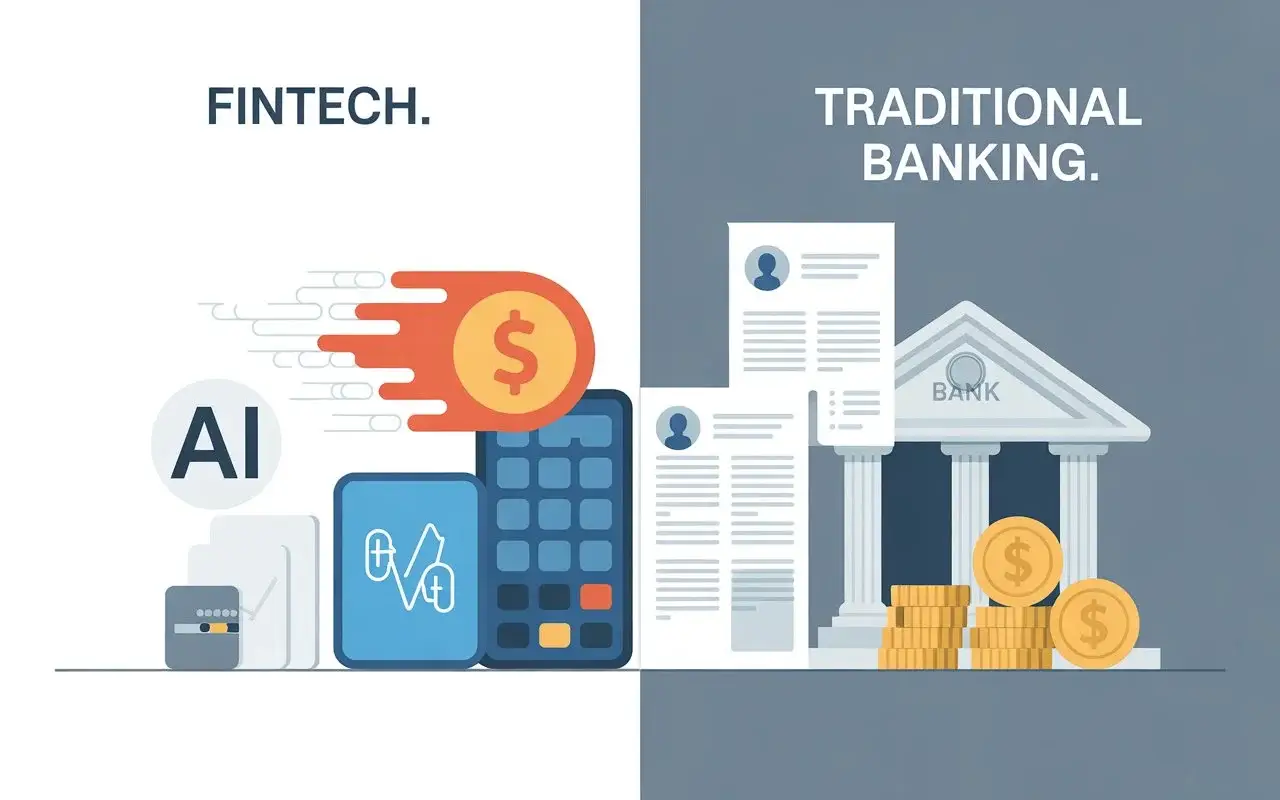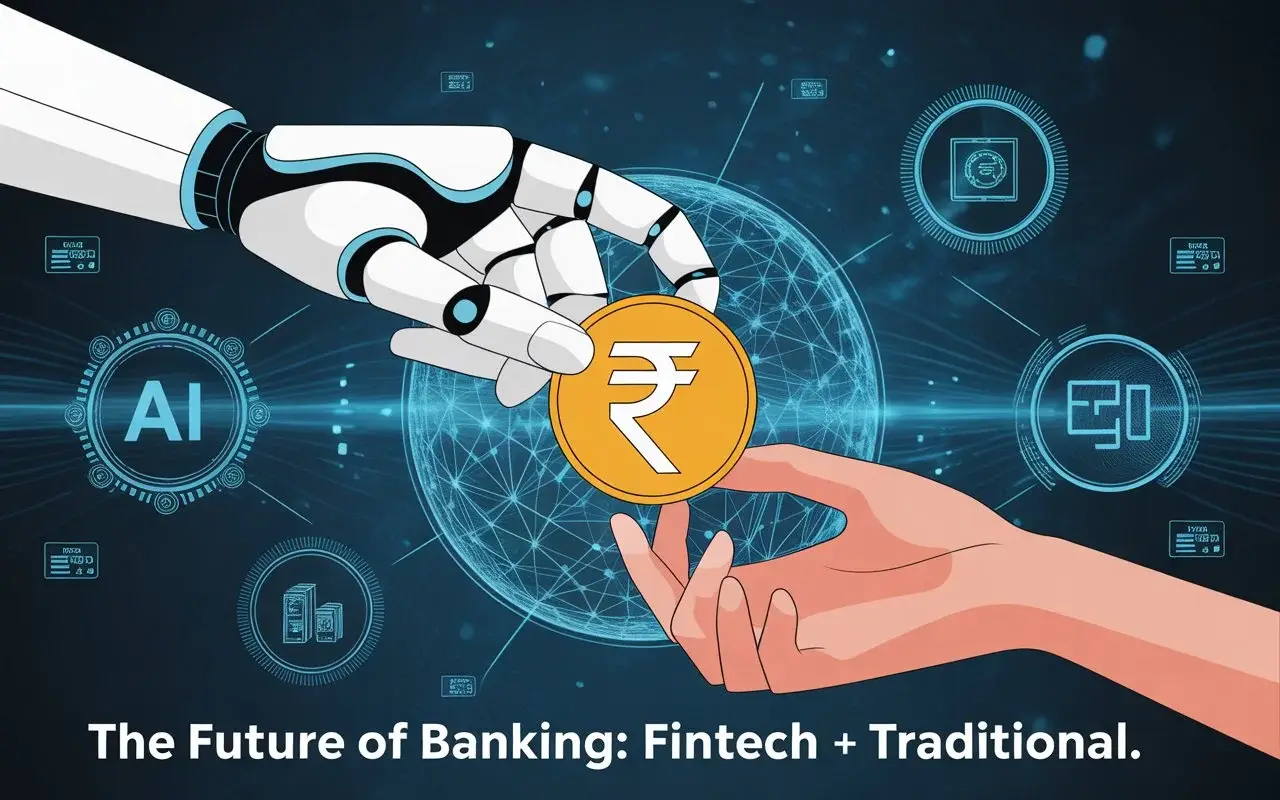In the current era, there has been a huge change in the financial world for the Fintech sector. In the past, people would go to the bank, and still do, and after visiting the bank, they had to stand for hours, carrying various types of documents by hand. Then, the entire process of depositing or withdrawing money depends on the bank employees.
But nowadays, everything is happening very quickly on mobile apps or online platforms. But the real question is, what is the difference between Fintech and traditional banking?
What is Traditional Banking?
Traditional banking means the conventional banking system where financial transactions of ordinary people are carried out, such as depositing money, withdrawing money, or paying various types of bills. You can even do this by visiting the bank branch, but the entire process is done manually, meaning you have to be present there.
The pace of work here is relatively fast, and all processes are paper-based and bound by bank deadlines. This means that you cannot go to the bank whenever you want. If you want to go to the bank, there is a specific time at the bank, and you have to go and get your work done during that time.
What is Fintech?
Fintech is a combination of finance and technology. This Fintech sector is the complete opposite of traditional banking. Both of these places provide financial services, but the process in the Fintech sector is a little different.

The Fintech sector provides financial services to people digitally. Here too, you will get everything from banking, investments, insurance, and various types of bill payments. But you don’t have to go to the bank anymore. You can do everything from the comfort of your home using your smartphone, via the app, website, or UPI platform.
Key Differences Between Fintech and Traditional Banking
| Feature | Fintech | Traditional Banking |
|---|---|---|
| Speed | Instant digital transactions | Slower, manual process |
| Accessibility | 24/7 via mobile apps | Limited to branch hours |
| Cost | Low transaction fees | Higher service charges |
| Technology | AI, Blockchain, Automation | Legacy systems |
| User Experience | Seamless and user-friendly | Paperwork and delays |
| Reach | Accessible in remote areas | Mostly urban-focused |
Example Of Fintech vs Traditional Banking
- Fintech companies: Paytm, PhonePe, RazorPay, Groww, CRED.
- Traditional Banks: SBI, HDFC, ICICI, Axis Bank, Bank of India, Punjab National Bank.

Today, these two fields complement each other. Now there are many banks that are providing digital services by joining hands with printtech companies. Like UPI, net banking, and instant Loan Apps. Among these, the most popular digital banking system is YONO SBI.
Also Read: Top 10 Fintech Companies in India
The Future of Fintech and Traditional Banking
In the future, Fintech will strengthen India’s banking system even faster by using technologies such as artificial intelligence and blockchain.

However, traditional banking will not disappear completely, but rather, Fintech and traditional banking will merge to create a hybrid banking system that will provide people with smart financial services and protection.
Also Read: Best Fintech Companies in the US
Conclusion
In the current era, fintech and traditional banking are two important parts of our financial system. Fintech has made our lives much easier, digital, and faster. On the other hand, traditional banking still gives us trust and security.
However, in the future, the combination of these two systems will make us much stronger in terms of financial services, where new technology and trust will work together. As a result, the benefits of the people and the development of the country’s economy will increase significantly.
FAQs About the Future of Fintech and Traditional Banking
What is Fintech?
Fintech, short for Financial Technology, combines finance and technology to offer faster, smarter, and more convenient financial services. It includes digital payments, online loans, and investment platforms.
What is Traditional Banking?
Traditional banking refers to the conventional banking system where people visit bank branches for deposits, withdrawals, or loans. It is secure and trusted but often slower and paperwork-heavy.
What is the main difference between Fintech and Traditional Banking?
Fintech provides digital, real-time financial services through apps and automation, while traditional banking depends on physical branches and manual processing.
Which is better — Fintech or Traditional Banking?
Both have unique advantages. Fintech offers speed and accessibility, whereas traditional banking ensures security and stability. The future will likely combine both models.
What is the future of banking?
The future of banking will be a hybrid model where fintech and traditional banks work together. Technologies like AI, blockchain, and the Digital Rupee will redefine how financial systems operate.
